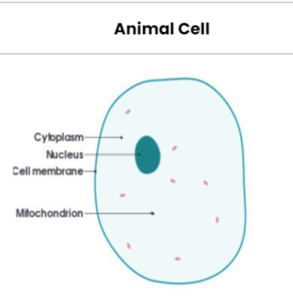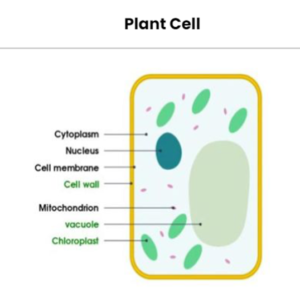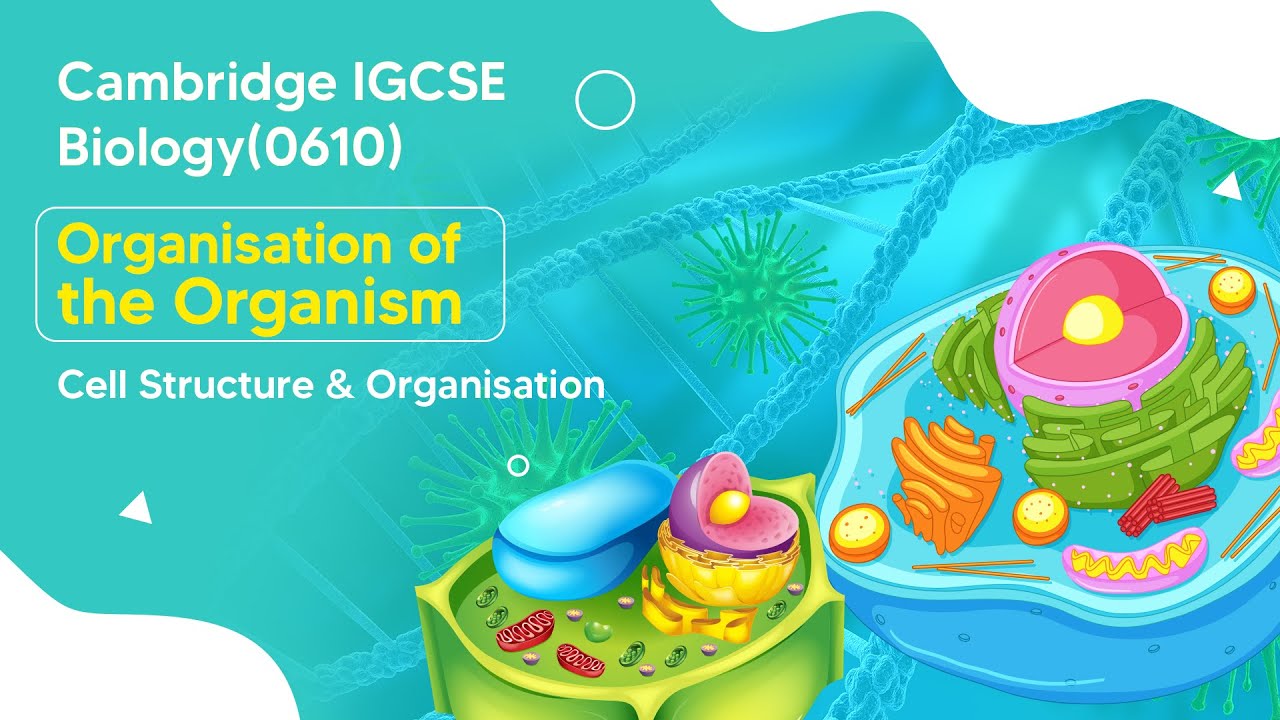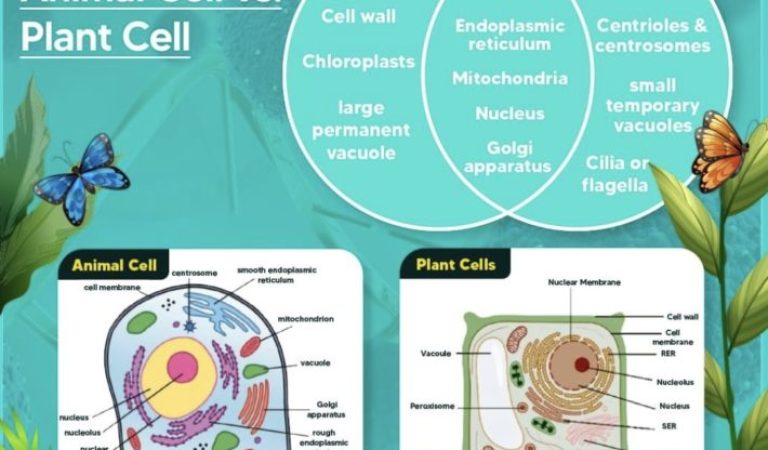- Animal Cells and Plant Cells have a few similarities as well as a few differences among them.
[Please watch the video attached at the end of this blog for a visual explanation of the Marvels of Cell Structures : Animal Cell vs. Plant Cell]
We have learnt that all living organisms are made up of cells and that there are both unicellular organisms and multicellular organisms. We have also learnt that cells are microscopic and cannot be seen with the naked eye. In order to see a cell, a light microscope or an electron microscope need to be used.
An Animal Cell and Its Organelles
In the animal cell shown below, there are different structures that perform different functions. All these structures are extremely important for the functioning of the cell, and are frequently examined in the papers.

1 Cell membrane
This is a thin layer that runs around the entire cell and this controls what enters and leaves the cell. If there are different molecules trying to enter the cell, the cell membrane can prevent certain substances from entering the cell. It is involved with transport and it can control what enters and leaves the cell.
This property of only some molecules being allowed through is called being “selectively or partially permeable”.
2 Nucleus
This is perhaps the most prominent and important structure of the animal cell.This holds all of our DNA. We also know that our DNA is what codes proteins, and those same proteins ultimately control everything happening in our cells, therefore the nucleus is considered to be the control centre of the cell.
3 Cytoplasm
Cytoplasm is a gel-like substance that fills up the inside of the cell. The cytoplasm contains many different dissolved chemicals and substances and these chemicals actively take part in different cellular chemical reactions. The cytoplasm therefore facilitates all these cellular chemical reactions taking place.
4 Mitochondria
The mitochondrion (plural: mitochondria) is another important structure of the cell. This is because they are responsible for providing energy for the entire cell. The energy required for all cellular activities is generated by the mitochondria through aerobic respiration.
Some cells have few mitochondria, whereas other cells have many mitochondria. Cells with many mitochondria usually show a higher rate of metabolism compared to those with fewer mitochondria, because the higher the number of mitochondria, higher the amount of energy generated.
5 Ribosomes
Ribosomes are extremely tiny structures found within the cell and they cannot be seen under a light microscope. A much more powerful microscope like the electron microscope must be used in order to see them.
Ribosomes are made of both RNA and protein and they are the site of protein synthesis in cells.
6 Vesicles
Vesicles transport substances from one place in the cell to another.
Plant Cell and Its Organelles
Now that we know what the important organelles of an animal cell are, we must now figure out what are the special structures in a plant cell.
Similar to an animal cell, a plant cell has a cell membrane, nucleus, cytoplasm, and mitochondria. However in addition to the above structures, plant cells also have structures such as the cell wall, the vacuole, and chloroplasts. This means that plant cells have a few additional structures when compared with an animal cell.

1 Cell wall
The cell wall is a thick structure at the outermost edge of a plant cell. A plant cell wall is made up of cellulose, and it is fully/ freely permeable. This means, unlike the cell membrane, any substance or molecule can pass through the cell wall. The cell wall supports the cell, strengthens it and prevents it from being physically damaged. It is because of the cell wall that a plant cell can become turgid when water enters it through osmosis.
2 Vacuole
The vacuole is a large organelle which contains a watery substance inside it called the cell sap. The vacuole is responsible for storing water and sugars for the plant cell.
3 Chloroplast
Chloroplasts are green in colour and they are the specialised organelles that carry out photosynthesis. The reason that chloroplasts are green is due to the presence of the pigment called chlorophyll.
A quick recap!
When comparing an animal cell and a plant cell, we can see that both the animal cell and plant cell contain the cell membrane, they both have a nucleus, they both contain cytoplasm within the cell and they both also have mitochondria. Since mitochondria are present in both types of cells, both animal cells and plant cells carry out the process of respiration.
Then we have the organelles that are found in plant cells but not in animal cells. They are the cell wall, a large permanent vacuole and chloroplasts.
It must also be noted that while animal cells do not have a vacuole, there might sometimes be some animal cells that have temporary vacuoles. Temporary vacuoles usually contain fluids and food, and may be present in both animal cells as well as plant cells. Owing to their temporary nature, they disappear once their function is done.
Revising Animal Cells and Plant Cells
Since this topic is related to the Plant Kingdom and the Animal Kingdom, so read up on both these Kingdoms and their features before or after reading this article.
Every single paper for the past 10 years has questioned this area, therefore it is crucial that you know the differences between the animal cell and the plant cell. An exam tip would be to draw a diagram of both these cells, label them and refer back to it when you wish to revise, as your brain might remember information more when presented as a diagram.
This lesson is quite interesting and questions are of various types. Some questions can be found here as well, and you can time your answers to see if you can stick to the time limit given.
If you are struggling with IGCSE revision or Biology in particular, you can reach out to us at Tutopiya to join revision sessions or find yourself the right tutor for you.
Attempt the quiz to know where you stand!







